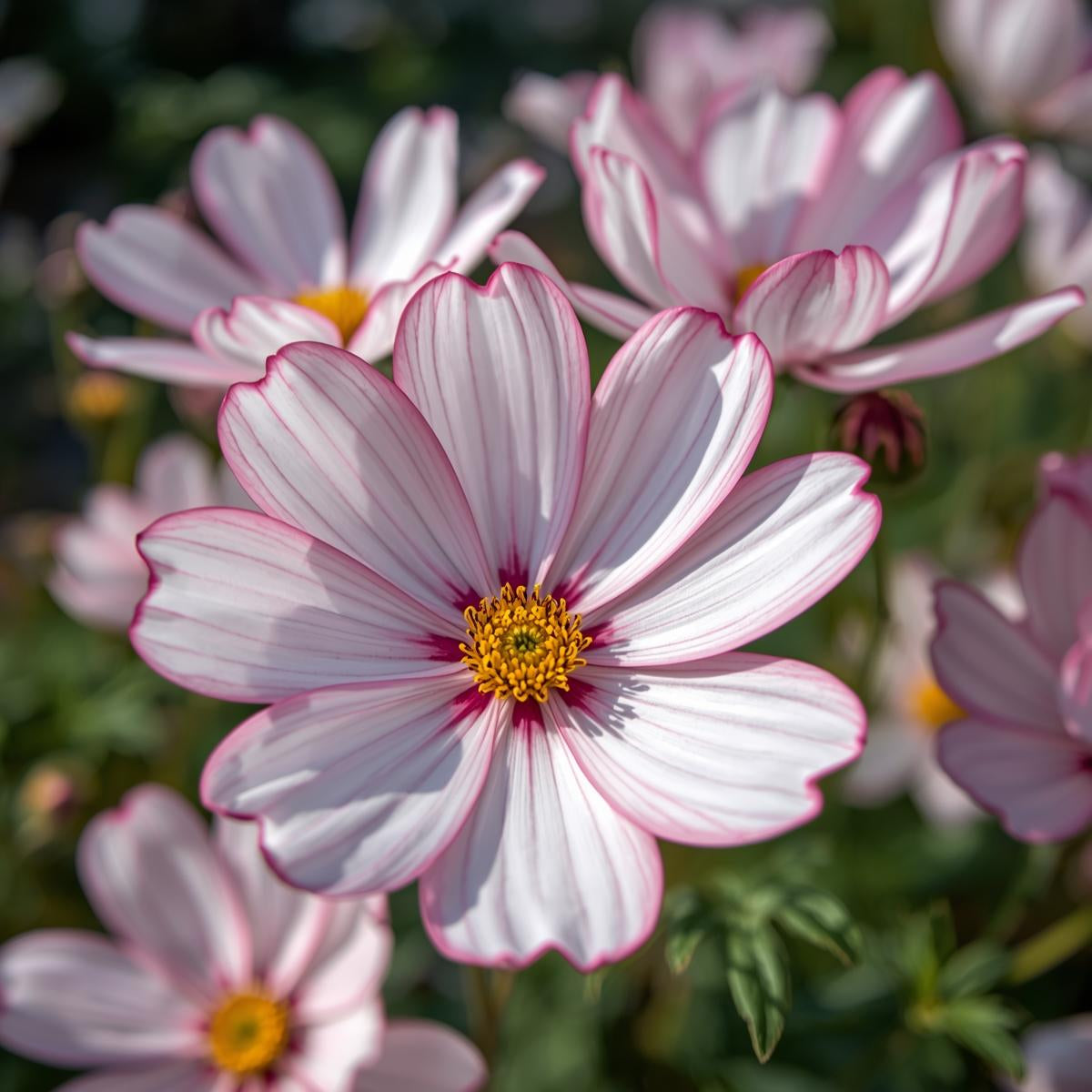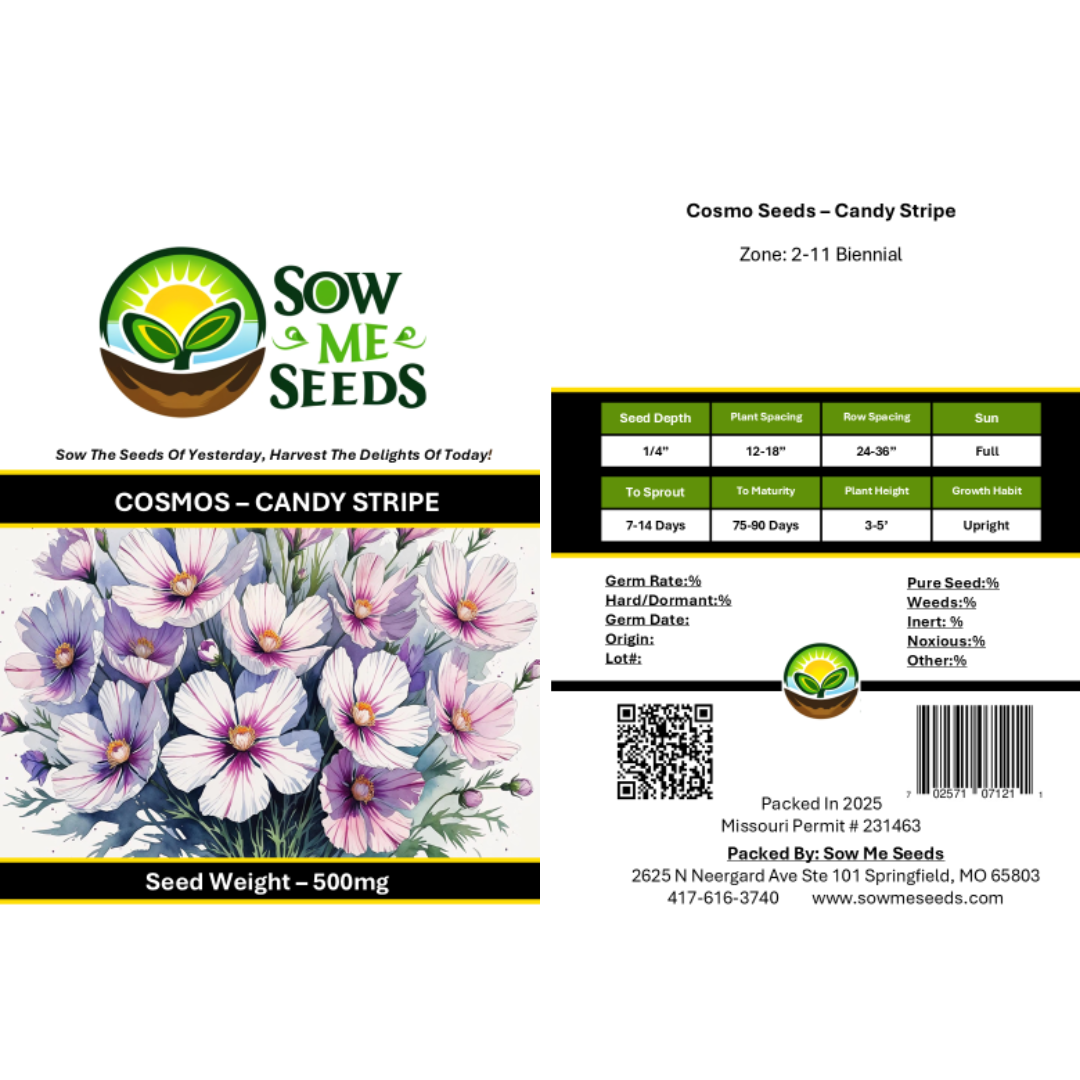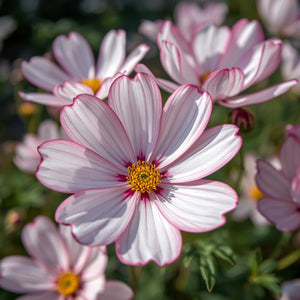- Hardiness Zone: 3-9 Annual
Seed Depth: ¼ inch
Seed Spacing: 12–18 inches
Row Spacing: 24–36 inches
Sunlight: Full sun
Days to Sprout: 7–14 days
Days to Bloom: 75–90 days
Plant Height: 36–48 inches
Plant Type: Annual
Sunlight: Requires full sun for optimal growth, with at least 6–8 hours of daily light.
Soil Type: Performs best in well-drained, average to poor soil. Avoid overly rich soil to prevent excessive foliage growth at the expense of blooms.
When to Plant: Direct sow after the last frost, or start indoors 4–6 weeks early and transplant once soil has warmed.
Direct Sowing: Sow seeds ¼ inch deep in prepared soil. Thin seedlings to 12–18 inches apart once established.
Indoor Sowing: Start in seed trays with light, well-draining mix. Keep warm and lightly moist until germination, then transplant after hardening off.
Succession Planting: Not typically needed—plants bloom continuously through the summer and fall until frost.
Watering: Water moderately during dry spells. Established plants are drought-tolerant and prefer slightly dry soil over soggy conditions.
Fertilizing: Avoid heavy feeding. Too much fertilizer can lead to more foliage and fewer blooms. A light application of compost at planting is often sufficient.
Mulching: Apply mulch around the base to retain soil moisture and reduce weed pressure, especially during hot summer months.
Staking: Support may be needed in windy areas due to the plant’s tall, delicate stems.
Deadheading: Regularly remove spent blooms to encourage continuous flowering through the season.
Harvesting Fresh Flowers: Cut cosmos blooms early in the morning, just as the petals begin to unfurl. Use clean scissors or snips and place immediately in cool water. Regular harvesting encourages continuous blooming throughout the season.
When to Harvest Seeds: Leave some flowers on the plant to fully mature. Seed heads are ready when the petals drop and the centers dry to a crisp brown.
How to Collect: Snip off dried flower heads and gently pull them apart to release the long, dark, spindle-shaped seeds.
Drying and Cleaning: Spread seeds on a paper towel or screen in a cool, dry place for several days. Remove any remaining chaff or plant debris.
Storage Tips: Store completely dry seeds in a labeled envelope or airtight container. Keep in a cool, dark, and dry place. Cosmos seeds can remain viable for 3–4 years.
Why You’ll Love It
Charming bi-color blooms: White petals with bold pink edges.
Great for pollinators: Attracts bees, butterflies, and beneficial insects.
Long bloom time: Flowers continuously from mid-summer to first frost.
Low maintenance: Tolerates poor soil and dry conditions.
Perfect for cutting: Tall stems and delicate flowers are ideal for vases.
Plant Characteristics
Bloom Color: White with pink edges.
Height: 36–48 inches.
Spread: 12–18 inches.
Type: Annual.
Attracts: Bees, butterflies, and other pollinators.
Companion Planting Tips
Good companions: Zinnias, marigolds, sunflowers, and dill.
Vegetable bed friendly: Plant near tomatoes, squash, or cucumbers to encourage pollination.
Self-sowing bonus: Leave a few blooms to seed themselves for next year’s surprise.
Common Issues and Pests
Wind damage: Tall plants may benefit from staking in exposed areas.
Aphids: Occasional infestations can be treated with insecticidal soap or a blast of water.
Overwatering: Too much moisture can lead to mildew—plant in well-drained soil and avoid overhead watering.
Seeds Per Packet
| 500mg | Approximately 90 |
| 1g | Approximately 180 |
Why You’ll Love It
Charming bi-color blooms: White petals with bold pink edges.
Great for pollinators: Attracts bees, butterflies, and beneficial insects.
Long bloom time: Flowers continuously from mid-summer to first frost.
Low maintenance: Tolerates poor soil and dry conditions.
Perfect for cutting: Tall stems and delicate flowers are ideal for vases.
Plant Characteristics
Bloom Color: White with pink edges.
Height: 36–48 inches.
Spread: 12–18 inches.
Type: Annual.
Attracts: Bees, butterflies, and other pollinators.
Companion Planting Tips
Good companions: Zinnias, marigolds, sunflowers, and dill.
Vegetable bed friendly: Plant near tomatoes, squash, or cucumbers to encourage pollination.
Self-sowing bonus: Leave a few blooms to seed themselves for next year’s surprise.
Common Issues and Pests
Wind damage: Tall plants may benefit from staking in exposed areas.
Aphids: Occasional infestations can be treated with insecticidal soap or a blast of water.
Overwatering: Too much moisture can lead to mildew—plant in well-drained soil and avoid overhead watering.
Seeds Per Packet
| 500mg | Approximately 90 |
| 1g | Approximately 180 |




Share and get 15% off!
Simply share this product on one of the following social networks and you will unlock 15% off!